LONDON – It’s not a musical, but screenwriter Tim Firth’s stage version of his script for the hit 2003 Nigel Cole film “Calendar Girls” takes aim squarely at the audience that flocked to see “Mamma Mia!” and hits its mark.
Sharing the same canny, if unsophisticated, mix of inoffensive titillation and sentimentality as the original, the play tells the real-life tale of a group of middle-aged English women who strip down for a charity calendar and become instantly famous.
The movie boasted such top-line screen talent as Helen Mirren and Julie Walters, and the theatrical production at London’s Noel Coward Theatre features big names from U.K. stage and television including Patricia Hodge, Lynda Bellingham and Sian Phillips.
Fashioned by Firth and director Hamish McColl as a two-hour crowd-pleaser, the play follows the film in establishing the contented but dull lives of the women of a village in Yorkshire.
After Chris (Hodge) loses her husband to leukemia, mischievous pal Annie (Bellingham) suggests their group of members of the Women’s Institute should make a daring calendar in order to raise money for the local hospice.
The funniest sequence in the play is a very clever piece showing the women doing various homely tasks in the nude and being snapped by a bashful photographer (Carl Prekopp).
Keeping the action at home in the village, the play doesn’t bother with the film’s excursion to Hollywood, and the result is a well-packaged tale with plenty of down-home laughs and a nod to the serious point of making the calendar.
Hodge and Bellingham make fine leads, and Phillips is given some razor-sharp lines as a flinty senior whose sense of humor is much broader than it first appears. Elaine C. Smith is great fun as a tattooed Scottish piano player, Gaynor Faye (from TV’s “The Chase”) is suitably glamorous as the buxom woman whose photo is going to need “considerably bigger buns,” and Julia Hills is convincing as a vulnerable wife married to a bully. Brigit Forsyth plays the WI group’s snobbish leader as counterpoint to the others with terrific comic timing.
The play lands in London following a national tour, so the ensemble meshes together very well, making the most of designer Robert Jones’ clever sets and Emma Williams’ inventive costume designs, which draw on the film’s use of sunflowers and manage to maintain the modesty of a gallant cast.
Venue: Noel Coward Theatre, London, runs through Sept. 19; Cast: Patricia Hodge, Lynda Bellingham, Sian Phillips, Elaine C. Smith, Gaynor Faye, Julia Hills, Brigit Forsyth; Playwright: Tim Firth; Director: Hamish McColl; Set designer: Robert Jones; Costume designer: Emma Williams; Lighting designer: Malcolm Rippeth; Sound designer: John Leonard; Music: Steve Parry.
This review appeared in The Hollywood Reporter.



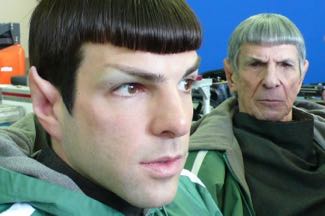

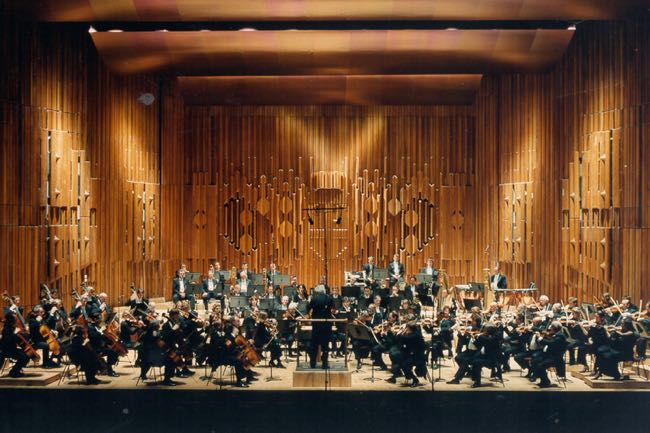
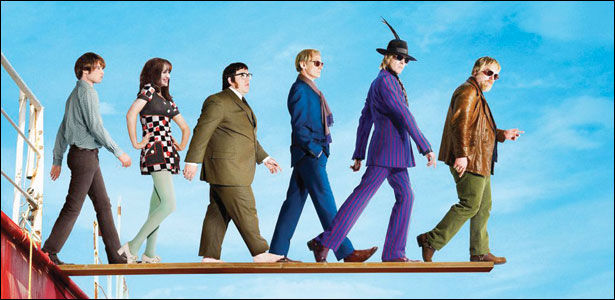
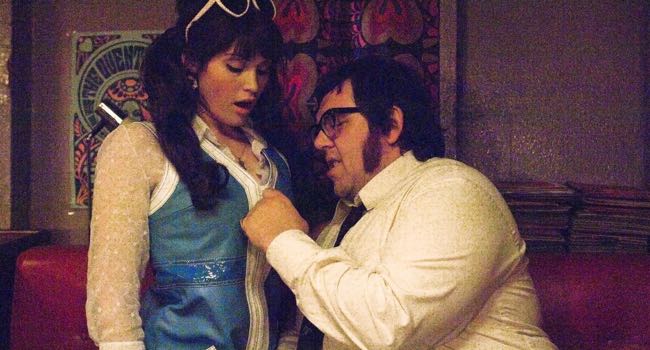
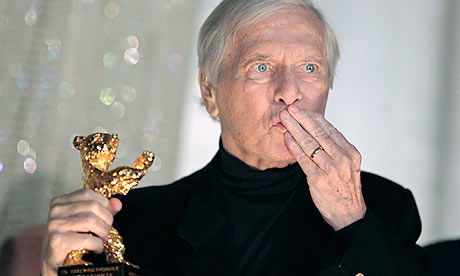
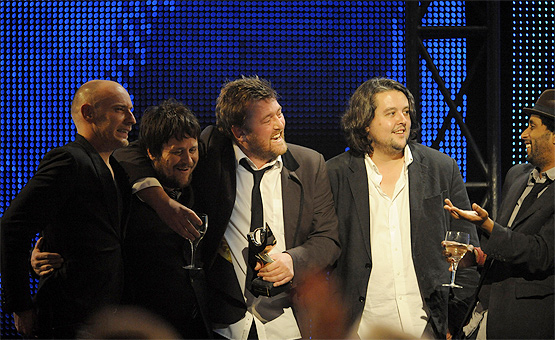

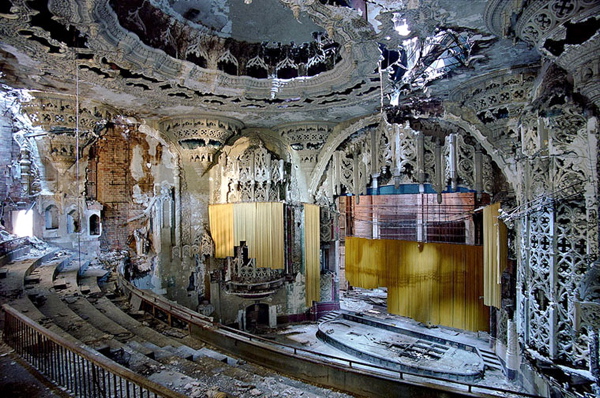

Films about newspapers, like newspapers, are a dying breed
By Ray Bennett
Watching the final edition of The Los Angeles Herald Examiner roll off the presses in November 1989 remains one of the most haunting memories of my life and it’s a tragedy that more papers are going bust. The news about newspapers these days is so dire that the appearance of two movies featuring reporters is as surprising as it is welcome. There aren’t likely to be many more.
Russell Crowe and Rachel McAdams (above) play reporters in “State of Play”, now on release, and Robert Downey Jr. is another in “The Soloist”, which just opened in the United States and will reach the United Kingdom from Universal on Sept. 11. I haven’t seen “The Soloist” yet, but David Denby, who is not a critic I generally turn to, has a very good piece on the two of them in The New Yorker.
UK critics like “State of Play’ more than their US counterparts, which is odd because it doesn’t come close to the 2003 BBC miniseries starring John Simm, David Morrissey, Kelly Macdonald, Bill Nighy and Polly Walker. There is much to like about Kevin Macdonald’s film version, especially the production design, and supporting performances by Jason Bateman and Jeff Daniels. But it shirks the opportunity to pursue bigger ideas than the messy affairs of one politician (Ben Affleck).
Movies about newspapermen have been numerous over the decades, but not many of them are very good although it’s easy to forget that Clark Gable is a reporter in “It Happened One Night” (1934) and so are Jimmy Stewart in “The Philadelphia Story” (1940) and Barbara Stanwyck in “Meet John Doe” (1941).
Many westerns feature small-town newspaper editors including John Ford’s splendid “The Man Who Shot Liberty Valance”, with its great lesson about fame:
“You’re not going to use the story, Mr. Scott?
“No, sir. This is the West, sir. When the legend becomes fact, print the legend.”
Edmond O’Brien (below) plays the inebriated editor who is shocked to find the saloon bar is shut down during a trial: “Bar’s closed? No exceptions for the working press? Why, that’s carrying democracy much too far!”
Ron Howard’s “The Paper” (1994), with Michael Keaton and Glenn Close as rival editors, is entertaining without being especially insightful. Mary McGuckian’s “Rag Tale” (2005) is diabolical and seemingly shot, as I said when it came out, on David Letterman’s monkey cam.
“The Front Page” was made four times, first efficiently by Lewis Milestone in 1931 with Adolphe Menjou as Walter Burns and Pat O’Brien as Hildy Johnson; sublimely as “His Girl Friday” by Howard Hawks in 1940, with Cary Grant as Burns and Rosalind Russell as Hildy; nostalgically by Billy Wilder in 1974, with Walter Matthau and Jack Lemmon, and embarrassingly by Ted Kotcheff as “Switching Channels” (1988), with Burt Reynolds and Kathleen Turner, although the characters’ names are changed.
Charles MacArthur and Ben Hecht, ex-newspapermen who went on to write screenplays, wrote “The Front Page” for the stage. Hecht was by far the more successful, working on innumerable films, often uncredited. He won the first Academy Award for an original screenplay for “Underworld”, directed in 1927 by Josef von Sternberg, and also notable for some great character names: Bull Weed, Feathers McCoy, and Rolls Royce Wensel.
The other newspaper film I’m most fond of is titled “Deadline U.S.A.” (below, 1952), written and directed by Richard Brooks, another ex-reporter, with first-class black-and-white cinematography by Milton Krasner, a six-time Oscar nominee who won for “Three Coins in the Fountain” in 1957.
Humphrey Bogart is great in the film as a battling editor fighting to run a big story about political corruption while trying to keep his failing newspaper from going bust. Some stories never go out of date.